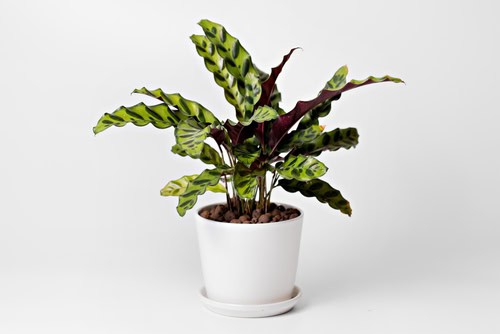Rattlesnake plants are a popular choice for indoor plant enthusiasts due to their unique foliage and adaptability to indoor environments. However, if you notice your rattlesnake plant drooping, it could be a sign of an underlying issue that needs to be addressed.
Understanding the common causes of drooping rattlesnake plants is crucial to nursing your plant back to health. Overwatering, inadequate soil and drainage, poor light, and pests are some of the common factors that can cause your rattlesnake plant to droop.
Symptoms of a drooping rattlesnake plant include wilting, yellowing, and curling of leaves.
The role of watering, soil quality, light, temperature, humidity, fertilization, potting, pruning, maintenance, treatment, and recovery are all factors that can impact the health of your rattlesnake plant.
By understanding these factors and how they affect your plant, you can take the necessary steps to prevent your rattlesnake plant from drooping and promote its growth and health.
Key Takeaways
- Rattlesnake plants are popular indoor plants that can droop due to various factors.
- Symptoms of a drooping rattlesnake plant include wilting, yellowing, and curling of leaves.
- Proper watering, soil quality, light, temperature, humidity, fertilization, potting, pruning, maintenance, treatment, and recovery are crucial to maintaining a healthy rattlesnake plant.
You shouldn’t miss out on these other popular posts:
Understanding Rattlesnake Plant
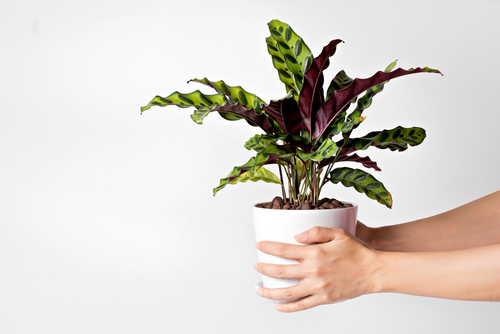
Rattlesnake plant, also known as Goeppertia insignis, is a popular houseplant that belongs to the Marantaceae family. It is native to the tropical regions of Brazil and is known for its striking foliage. The plant’s leaves are long and narrow, with a green base and dark green markings that resemble a rattlesnake’s skin.
Rattlesnake plants are relatively easy to care for, but they can be sensitive to changes in their environment. One of the most common issues that rattlesnake plant owners face is drooping leaves. This can be caused by a variety of factors, including overwatering, underwatering, low humidity, and inadequate light.
To keep your rattlesnake plant healthy and happy, it’s important to understand its basic care requirements. Here are a few key things to keep in mind:
- Light: Rattlesnake plants prefer bright, indirect light. They can tolerate some direct sunlight, but too much can scorch their leaves. If your plant is not getting enough light, its leaves may droop or curl.
- Water: Rattlesnake plants prefer moist soil, but they are susceptible to root rot if they are overwatered. It’s important to let the top inch of soil dry out before watering your plant again. If the leaves are drooping and the soil is wet, you may be overwatering.
- Humidity: Rattlesnake plants thrive in high humidity environments. If the air in your home is dry, you may need to use a humidifier or place a tray of water near your plant to increase the humidity.
- Soil: Rattlesnake plants prefer well-draining soil that is rich in organic matter. Avoid using heavy potting soil, which can retain too much moisture and lead to root rot.
By understanding the basic needs of your rattlesnake plant, you can help prevent issues like drooping leaves and keep your plant healthy and thriving.
Why Is My Rattlesnake Plant Drooping – 7 Common Problems
Rattlesnake plants are known for their beautiful foliage and unique patterns, but they can sometimes droop and lose their charm. Knowing the common causes of drooping can help you identify and fix the problem before it’s too late. Here are some of the most common reasons why your rattlesnake plant might be drooping.
1. Overwatering
Overwatering is one of the most common causes of drooping in rattlesnake plants. When the soil is constantly wet, the roots can suffocate and rot, which can lead to drooping and yellowing leaves. To fix the problem, make sure you’re not watering your plant too frequently, and always check the soil moisture level before watering.
2. Underwatering
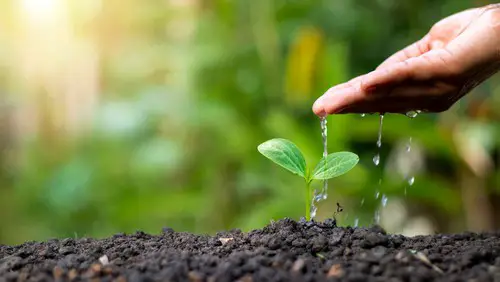
On the other hand, if you’re not watering your rattlesnake plant enough, it can also lead to drooping. When the soil is too dry, the plant can’t absorb enough water, which can cause the leaves to wilt and droop. To fix the problem, make sure you’re watering your plant regularly, but not too frequently.
3. Inadequate Light
Rattlesnake plants need bright, indirect light to thrive. If they’re not getting enough light, they can become weak and droopy. Make sure your plant is placed in a well-lit area, but not in direct sunlight, which can also damage the leaves.
4. Temperature Fluctuations
Rattlesnake plants prefer warm, stable temperatures between 60 and 80 degrees Fahrenheit. If the temperature fluctuates too much, it can stress the plant and cause it to droop. Make sure your plant is not exposed to drafts or extreme temperature changes.
5. Low Humidity
Rattlesnake plants are native to the rainforests of Brazil and require high humidity to thrive. If the air is too dry, the leaves can become dry and brittle, which can cause them to droop. To increase humidity, you can mist your plant regularly or place a humidifier nearby.
6. Pest Infestation
Pests like spider mites, mealybugs, and scale insects can also cause your rattlesnake plant to droop. These pests feed on the plant’s sap, which can weaken the plant and cause it to droop. To fix the problem, you can use insecticidal soap or neem oil to get rid of the pests.
7. Disease
Finally, diseases like root rot and bacterial leaf spot can also cause your rattlesnake plant to droop. These diseases are often caused by overwatering or poor drainage. To prevent these diseases, make sure your plant is not overwatered, and the soil is well-draining.
By knowing the common causes of drooping in rattlesnake plants, you can take the necessary steps to fix the problem and keep your plant healthy and thriving.
Symptoms of a Drooping Rattlesnake Plant

A healthy rattlesnake plant has upright leaves with vibrant green foliage. However, when the plant starts to droop, it indicates that something is wrong. Here are some common symptoms of a drooping rattlesnake plant:
- Drooping Leaves: One of the most obvious signs of a problem with a rattlesnake plant is drooping leaves. The leaves may start to curl or wilt, and the plant may look limp and lifeless.
- Yellow Leaves: Another symptom of a problem with a rattlesnake plant is yellowing leaves. If the leaves turn yellow and fall off, it could be a sign of overwatering or underwatering.
- Mushy or Soft Leaves: If the leaves of the rattlesnake plant feel mushy or soft to the touch, it could be a sign of root rot. This condition occurs when the plant is overwatered and the soil becomes waterlogged.
- Wilted Leaves: If the leaves of the rattlesnake plant are wilted, it could be a sign of a lack of water. The plant may need to be watered more frequently or moved to a location with higher humidity.
- Limp or Soft Stems: In addition to drooping leaves, the stems of the rattlesnake plant may also become limp or soft. This could be a sign of overwatering or root rot.
It’s essential to pay attention to these symptoms and take action to correct the problem. If left untreated, a drooping rattlesnake plant can eventually die.
The Role of Watering
Watering is a crucial aspect of keeping a Rattlesnake Plant healthy. Overwatering or underwatering can lead to drooping and other problems. It is important to strike the right balance when it comes to watering.
One of the most common reasons for a drooping Rattlesnake Plant is overwatering. Too much water can cause the soil to become waterlogged, which can lead to root rot and other issues. It is important to ensure that the soil is moist, but not wet.
On the other hand, a lack of water can also cause a Rattlesnake Plant to droop. These plants need to be watered regularly, but not too often. If the soil stays dry for too long, the plant may begin to wilt and droop.
It is important to develop a watering routine that works for the Rattlesnake Plant. This can vary depending on factors such as the size of the plant, the size of the pot, and the environment in which it is growing. It is recommended to water the plant when the top inch of soil feels dry to the touch.
Additionally, it is important to ensure that the soil has adequate drainage. If the soil does not drain properly, excess water can accumulate in the pot, leading to waterlogged soil and root rot. It is recommended to use a pot with drainage holes and to use a well-draining soil mix.
Importance of Soil and Drainage
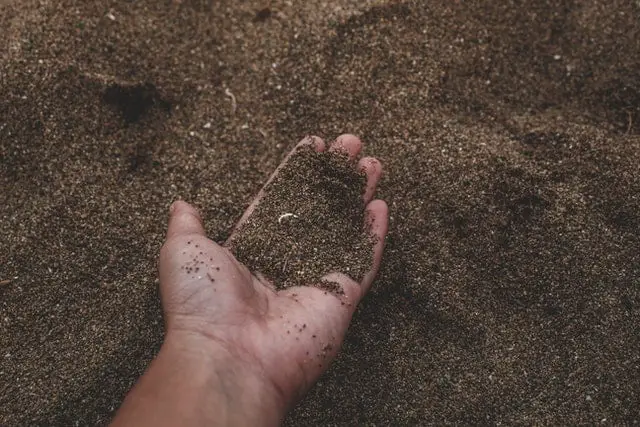
One of the most common reasons why a rattlesnake plant droops is due to poor soil and drainage. The plant requires a well-draining soil mix that allows excess water to drain away from the roots. If the soil is too compact or heavy, it can retain too much moisture and cause the roots to rot, which can lead to droopy leaves.
To ensure good drainage, it is recommended to use a well-draining potting mix with perlite or sand mixed in. Perlite is a lightweight mineral that helps to aerate the soil and improve drainage. It is also important to choose a pot with drainage holes so that excess water can easily escape.
When repotting a rattlesnake plant, it is important to use a well-draining soil mix that is specifically formulated for indoor plants. These mixes contain the right balance of organic matter, perlite, and other materials to promote healthy root growth and prevent waterlogging.
In addition to using a well-draining soil mix, it is important to ensure that the potting mix is not too compacted. Over time, potting mix can become compacted, which can reduce drainage and cause water to pool around the roots.
To prevent this, it is recommended to loosen the soil around the roots periodically and add fresh potting mix as needed.
Effect of Light and Temperature
The amount of light and temperature a rattlesnake plant receives can also cause drooping.
Light: Rattlesnake plants require adequate lighting to thrive. Too much or too little light can cause the leaves to droop. Direct sunlight can scorch the leaves, while low light can cause the plant to become weak and leggy. It is best to place the plant in a location that receives filtered light or bright, indirect light.
Temperature: Rattlesnake plants prefer warmer temperatures, between 60-85°F (15-29°C). Cold temperatures can cause the leaves to droop and turn yellow. It is important to keep the plant away from drafty areas and windows during the winter months.
To ensure that the rattlesnake plant receives adequate lighting and temperature, it is best to place it in a location that receives bright, indirect light and is away from cold drafts. If the plant is not receiving enough light, consider using a grow light to supplement its lighting needs.
Humidity and Rattlesnake Plant
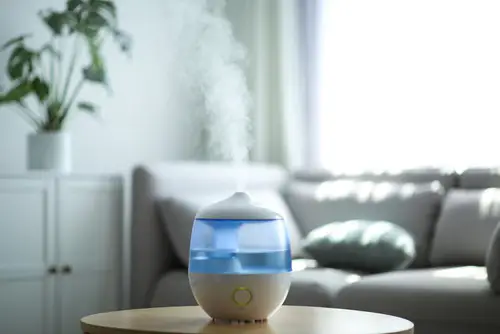
Rattlesnake plants are native to the tropical regions of South America and require a humid environment to thrive. When the air is too dry, the leaves of the plant can dry out and become crispy, leading to drooping.
To maintain the optimal humidity level for your rattlesnake plant, it is recommended to keep it in a room with a humidity level of 50% or higher. If the air in your home is too dry, consider using a humidifier or placing a tray of water near the plant.
In addition to humidity, temperature also plays a role in the health of your rattlesnake plant. The ideal temperature range for this plant is between 65°F and 80°F. Temperatures outside of this range can cause stress and lead to drooping.
If you notice your rattlesnake plant drooping, inadequate humidity may be the culprit. Check the soil moisture level and adjust the humidity level as necessary. Overwatering can also lead to drooping, so be sure to allow the soil to dry out slightly between waterings.
Impact of Pests and Diseases
Pests and diseases can also cause the rattlesnake plant to droop. Some of the common pests that attack the plant include spider mites, mealybugs, and aphids. These pests suck the sap from the plant, leading to wilting and drooping of the leaves.
One of the best ways to deal with these pests is by using insecticidal soap. The soap is effective in killing the pests without harming the plant. Neem oil is also an effective natural pesticide that can be used to control pests.
Fungal diseases can also cause the rattlesnake plant to droop. Root rot is a fungal disease that affects the roots of the plant, leading to wilting and drooping of the leaves. The disease is caused by overwatering the plant, which leads to waterlogged soil.
To prevent root rot, it is important to ensure that the soil is well-draining and that the plant is not overwatered. If the plant is already affected by root rot, it is important to remove the affected parts of the plant and repot it in fresh soil.
Role of Fertilization
Fertilization plays a crucial role in the growth and development of rattlesnake plants. These plants require a balanced supply of nutrients to thrive. Without proper fertilization, the plant may experience stunted growth and drooping leaves.
When it comes to feeding rattlesnake plants, it is important to use a balanced fertilizer that contains equal amounts of nitrogen, phosphorus, and potassium. This will help ensure that the plant receives all the necessary nutrients it needs to grow healthy and strong.
It is recommended to fertilize rattlesnake plants once a month during the growing season (spring and summer) and reduce fertilization during the dormant season (fall and winter). Over-fertilization can lead to burnt roots and foliage, so it is important to follow the manufacturer’s instructions and not exceed the recommended dosage.
In addition to using a balanced fertilizer, it is also important to ensure that the soil pH is within the optimal range of 6.0 to 6.5. This will help the plant absorb nutrients more efficiently.
Potting and Repotting
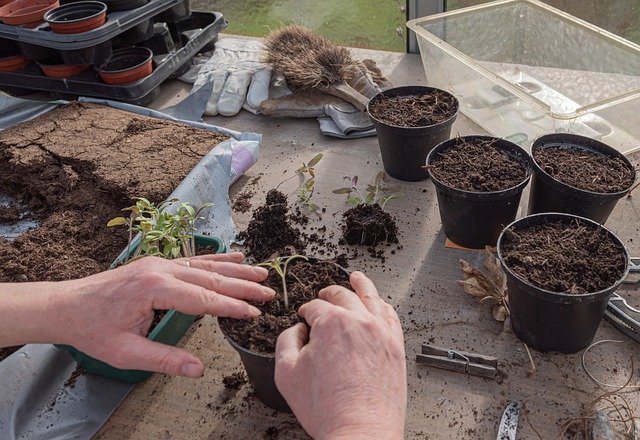
Rattlesnake plants need to be repotted every 1-2 years to ensure healthy growth. When repotting, it’s important to choose a container that is slightly larger than the current one. The new container should have drainage holes to prevent water from accumulating in the soil and causing root rot.
When repotting, gently remove the plant from its current container and examine the root ball.
If the roots are root-bound, meaning they have grown in a circular pattern and are taking up all the space in the container, it’s important to gently loosen them before planting in the new container. This will encourage the roots to grow outwards and establish a healthy root system.
It’s recommended to use a well-draining potting soil for rattlesnake plants. A mix of cactus or succulent soil and perlite is a good option. This will ensure that excess water can drain away from the roots and prevent waterlogged soil.
Adding a bit of compost to the potting mix can also provide nutrients to the plant. However, be careful not to add too much as this can cause the soil to become too rich and lead to over-fertilization.
Pruning and Maintenance
Regular pruning and maintenance are essential for keeping rattlesnake plants healthy and vibrant. Pruning helps to remove any diseased or damaged leaves, promote new growth, and maintain the plant’s shape and size.
To prune a rattlesnake plant, use a sharp, clean pair of scissors or pruning shears. Trim off any yellow, brown, or wilted leaves, as well as any leaves that are damaged or discolored. Be sure to cut the leaves close to the stem, but not so close that you damage the stem itself.
It’s important to prune your rattlesnake plant during the growing season, which typically runs from spring to fall. Avoid pruning during the winter months, as the plant is in a dormant phase and may not recover as quickly from pruning.
In addition to pruning, regular maintenance is also important for keeping your rattlesnake plant healthy. This includes watering the plant regularly, but not overwatering it, as well as fertilizing the plant every few months to promote healthy growth.
When fertilizing your rattlesnake plant, be sure to use a balanced, water-soluble fertilizer, and follow the instructions on the package carefully. Over-fertilization can lead to burnt leaves and other problems, so it’s important to use the right amount of fertilizer for your plant.
Treatment and Recovery
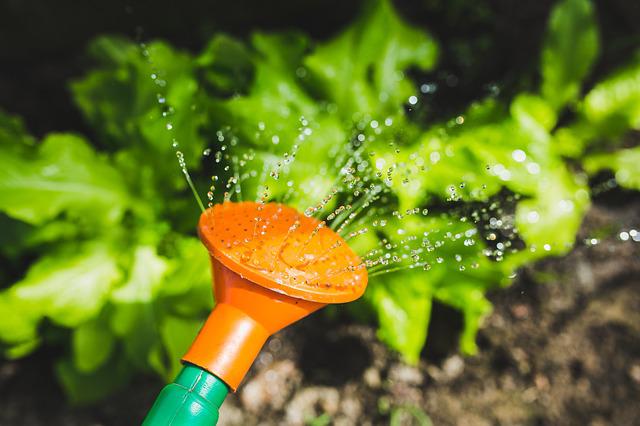
If a rattlesnake plant is drooping, it is important to identify the root cause and take appropriate action to revive the plant. Here are some treatment and recovery tips:
1. Check for Damage
Inspect the plant for any signs of damage, such as broken stems or leaves. If any damage is found, prune the affected parts of the plant to promote new growth.
2. Adjust the Moisture Level
Rattlesnake plants prefer moist soil, but overwatering can lead to root rot and drooping. Ensure the soil is well-draining and adjust the frequency of watering to maintain a balance. If the soil is too dry, water the plant thoroughly and allow it to drain. If the soil is too wet, allow it to dry out before watering again.
3. Increase Humidity
Rattlesnake plants thrive in high humidity environments. If the air in the room is dry, consider using a humidifier or placing a tray of water near the plant to increase the moisture level.
4. Use 3% Hydrogen Peroxide
If the root system is affected by root rot, use 3% hydrogen peroxide to treat the plant. Mix one part hydrogen peroxide with three parts water and water the plant with the mixture. The hydrogen peroxide will help to kill off any harmful bacteria and promote healthy root growth.
5. Avoid Air Conditioning Units
Rattlesnake plants do not do well in cold temperatures or near air conditioning units. Keep the plant away from any sources of cold air to prevent drooping.
6. Maintain Thick Leaves
Rattlesnake plants have thick leaves that hold moisture well. Ensure the plant is receiving enough light to maintain healthy leaf growth. If the leaves are thin and floppy, the plant may not be receiving enough light.
By following these treatment and recovery tips, a drooping rattlesnake plant can be revived and restored to its former glory.
Frequently Asked Questions
Why are my Calathea leaves drooping and curling?
Calathea plants are known for their beautiful and ornate leaves, but sometimes these leaves can droop or curl up. This is usually a sign that the plant is not getting enough water or humidity.
Calathea plants are native to tropical rainforests, so they require a lot of moisture to thrive. If the air in your home is too dry, the leaves may start to curl up or droop.
How do I fix droopy Calathea?
To fix droopy Calathea, you should increase the humidity around the plant. You can do this by misting the leaves with water or placing a humidifier near the plant.
You should also make sure that the plant is getting enough water. Calathea plants should be watered when the top inch of soil is dry to the touch.
How often should I water a Rattlesnake plant?
Rattlesnake plants, like Calathea plants, require a lot of moisture to thrive. You should water your Rattlesnake plant when the top inch of soil is dry to the touch. This will usually be about once a week, but it may vary depending on the humidity levels in your home.
Why does my Rattlesnake plant droop at night?
Rattlesnake plants are known for their unique ability to move their leaves up and down throughout the day. This is known as nyctinasty, and it is thought to be a way for the plant to conserve moisture.
At night, the leaves of the Rattlesnake plant will droop down to help prevent moisture loss. This is a natural process and nothing to be concerned about.
How do I make my Rattlesnake plant happy?
To make your Rattlesnake plant happy, you should provide it with plenty of moisture and humidity. You can do this by misting the leaves with water, placing a humidifier near the plant, and watering it regularly.
You should also make sure that the plant is getting enough light. Rattlesnake plants prefer bright, indirect light, so make sure to place it near a window where it can get plenty of light without being in direct sunlight.
Why are my Calathea stems bending?
If your Calathea stems are bending, it may be a sign that the plant is not getting enough light. Calathea plants need bright, indirect light to thrive, so make sure to place it near a window where it can get plenty of light without being in direct sunlight.
You should also make sure that the plant is getting enough water and humidity.

Hey, I’m Lisa and I’ve been an avid gardener for over 30 years. I love writing, talking and living in the garden! Feel free to connect with me on my socials below

